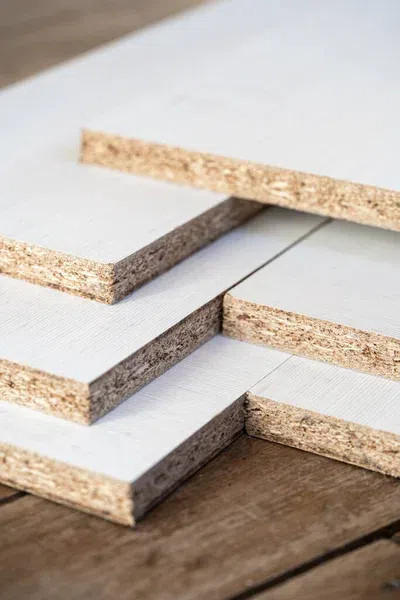Melamine MDF is a composite material comprised of Medium Density Fibreboard (MDF) that has a melamine resin impregnated paper applied to its surface. Here's a detailed description of each component:
Medium Density Fibreboard (MDF): This is an engineered wood product made from wood fibers that are combined with a synthetic resin adhesive and then formed into panels under high temperature and pressure. MDF is known for its smooth surface, uniform density, and versatility. It doesn’t have a grain like natural wood which makes it ideal for cutting, drilling, machining, and forming into complex shapes without risk of splitting or chipping.
Melamine Resin: Melamine resin is a type of thermosetting plastic which is strong, durable, and resistant to moisture, heat, and stains. When used as a laminate or covering for MDF, it is typically referred to as 'melamine'. The resin is usually mixed with formaldehyde to create a melamine resin which can be used to impregnate sheets of paper.
Melamine-impregnated Paper: This decorative paper is the final covering for the MDF panels. It is available in a wide range of colors and patterns, which can mimic the appearance of wood, stone, or any desired design. The melamine paper is soaked in the resin and then dried to a certain extent of curing.
By combining all three, you get melamine MDF which enjoys several properties that make it a popular material choice in the furniture industry:
Durability: The outer melamine layer provides a hard, scratch and impact-resistant surface which can withstand daily wear and tear better than many other finishes.
Ease of Maintenance: The non-porous, waterproof surface of melamine MDF is easy to clean and resists stains and spills, making it ideal for kitchen cabinets, countertops, and other high-use furniture.
Aesthetics: With a wide variety of finishes available, melamine MDF can offer the look of real wood, stone, or designer patterns at a fraction of the cost.
Workability: Despite the tough exterior, melamine MDF can be cut and machined much like plain MDF. Care must be taken to avoid chipping the melamine surface, so sharp tools and proper cutting techniques are recommended.
Stability: The thermosetting plastic does not react much to changes in temperature or humidity, making it more stable and less prone to warping or bending than some natural wood products.
Affordability: Melamine MDF tends to be more affordable than solid wood or veneered products, providing a cost-effective solution for many applications.
When considering melamine MDF for a project, it's important to also be aware of its limitations. It is heavier than some other materials like plywood, cannot easily be stained or painted over due to its non-porous surface, and it relies on a good quality core MDF to ensure structural integrity since the melamine layer does not add significant strength. When damaged, the melamine layer is not easily repaired, and care must be taken during machining to prevent chipping.



